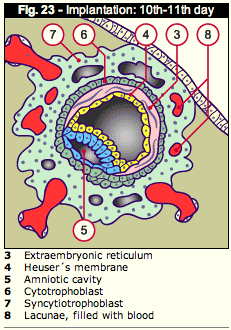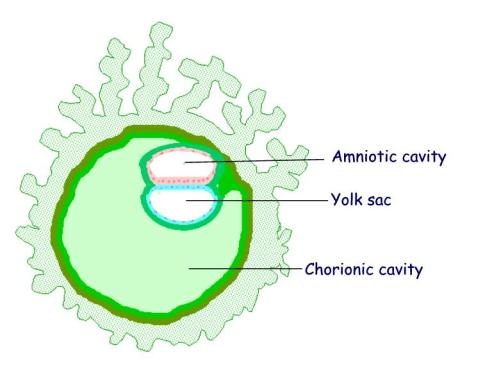I’m a major fan of kidneys — they’re fascinating organs for discussion of both development and evolution. Today I lectured about them in my human physiology course, but I could only briefly touch on their development, and instead had to talk on and on about countercurrent multipliers and juxtamedulary nephrons and transport membranes and all that functional physiology stuff. So I thought I’d get the evo-devo out of my system with a few words about them here.
Our kidneys go through an elaborate series of three major developmental stages — we essentially build three pairs of kidneys as embryos, and jettison two pairs as we go along. It actually looks like something out of Haeckel’s recapitulation theory, as we progressively assemble and then discard ‘primitive’ kidneys.

The first stage is the formation of the pronephric kidney. In the embryo, the circulatory system forms glomeruli, or tangled capillary beds, adjacent to the membrane that surrounds the body cavity, or coelom. Filtered plasma oozes into the coelom, and the pronephric kidney has ciliated openings into the coelom called nephrostomes, and the fluid is drawn into the tubules, where membrane pumps recover nutrients and salts and return them to the circulatory system. Whatever is left behind — wastes and water — trickles into the pronephric duct, which terminates in the cloaca.
It’s a simple, low pressure system that is adequate for collecting waste products from the early embryo. It relies on an existing cavity for collecting filtered fluids, and you can tell that it doesn’t use a high-pressure filtration scheme since it can get by with simple ciliary beating to cause fluid flow. It’s a primitive system that is retained for functional reasons: metabolizing embryonic cells are producing chemical waste products, and some kind of waste disposal system is essential for even this early stage.

The second stage is the mesonephric kidney. New tubules bud off the pronephric duct, but unlike the pronephric tubules, these are directly invested with capillary glomeruli and form spherical filtrate collectors called Bowman’s capsules. This is the big functional difference from the pronephros: filtered fluids are no longer collected indirectly from the coelom, but straight from the circulatory system. Some of the mesonephric tubules may retain a connection with the coelom, but this is no longer the sole way to collect filtrate.
The pronephros degenerates completely as the mesonephros takes over its job. As it withers away, the mesonephric tubules continue to use the pronephric duct, which gets renamed: it’s now called either the mesonephric duct, or if you prefer the old school names, the Wolffian duct. Even the mesonephros is doomed, though; it’s an intermediate stage that can cope with the light loads of waste produced by the embryo at this point, but an even more elaborate, more efficient kidney, the metanephros, is also beginning to grow, and it’s going to make the mesonephros superfluous.

<
The metanephric kidney, the third and final stage of development (the metanephric kidney is the familiar adult kidney we all possess), buds from the mesonephric duct and forms a unique structure with familiar elements. The new kidney makes branching ducts from a central collecting point, like a spray of flowers; these new ducts look just like mesonephric tubules, with a Bowman’s capsule on the outer, or cortical side of the kidney, and loops descending down into the medulla to generate a concentration gradient of salts used in generating hyperosmotic urine (which is what I talked about in class today, and won’t say anything further here). The subunits are similar to the mesonephric tubules, just arrayed in a different and specific organization for even more effective mechanisms for maintaining salt balance.
This metanephric stage is also complicated by the co-development of the reproductive system. The gonads are differentiating and forming alongside the degenerating mesonephric kidney. In addition, another duct, the Müllerian duct forms in parallel to the Wolffian duct, so now, briefly, we have two pairs of kidneys and two pairs of longitudinal ducts. This is going to be followed by consolidation and change, though, and it’s going to be a sex dependent pattern.
In females, the Wolffian duct is mostly going to degenerate and be lost, along with the mesonephros. The Müllerian duct is going to develop into the fallopian tubes, uterus, cervix, and upper vagina. The only part of the mesonephric duct retained will be the branch connecting the metanephros to the cloaca.
In males, the M&uum;llerian duct degenerates. Yes, it seems incredibly wasteful and pointless: we guys built this parallel duct as embryos, and then promptly threw it away, unused. Instead, the Wolffian/mesonephric duct is retained and becomes the ductus deferens, that useful tube for transporting sperm from the testis to the penis.
I think you can see what’s cool about the kidneys — they follow a sequential pattern of development that also happens to reflect the evolutionary history of kidneys. You might be tempted to speculate that it follows a Haeckelian model, where development necessarily follows an evolutionary trajectory because change can only come by addition of new features, but don’t be fooled. There are a couple of reasons why this peculiar pattern of retaining ancient kidney types is maintained.
One is existence of developmental linkages: disrupting any of these earlier kidneys leads to serious developmental anomalies in subsequent kidneys. Each kidney is built on the foundations of the previous one; mutations that would excise that old less efficient, less sophisticated form would also prevent the normal development of the metanephros. Even if they were totally non-functional, we would still need the patterning aspect of the primitive kidneys to be present.
The other reason is functional. The metanephric kidney is complex and intricate, and takes more time to develop — but cellular metabolism isn’t going to just stop everywhere else in the embryo and wait for the kidneys to be put in place. It’s like the situation when construction workers are building a house, and they still occasionally need to empty their bladders, even if the elaborate bathroom faced with Grecian marble and equipped with the latest German plumbing fixtures isn’t done yet … so a porta-potty is wheeled onto the site.
And that’s what I like about kidneys: all the funky relics of the construction process are still there, hanging out and seeming to contribute to an excessively complex tangle of complicated relationships.
Kalthoff K (2001) Analysis of biological development. McGraw-Hill, NY.














